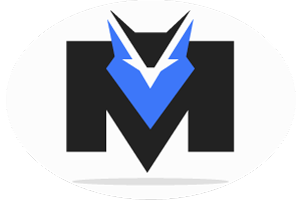Digital Marketing 101: Where to Start Your Journey
In today’s digital world, having a strong online presence is essential for any business looking to thrive. Digital marketing encompasses a range of strategies and techniques that help businesses reach and engage their target audience online. Whether you’re new to digital marketing or looking to refine your approach, this guide will provide you with the foundational knowledge you need to get started.
What is Digital Marketing?
Digital marketing refers to all marketing efforts that use the internet or an electronic device. Businesses leverage digital channels such as search engines, social media, email, and websites to connect with current and prospective customers.
Why Digital Marketing is Important
- Broader Reach: Digital marketing allows you to reach a global audience.
- Cost-Effective: It’s often more affordable than traditional marketing methods.
- Measurable Results: Digital marketing offers data and analytics to track the success of your campaigns.
- Targeted Advertising: You can specifically target your ideal customers based on demographics, interests, and behaviors.
Digital marketing is not just about promoting your business online; it’s about understanding your customers’ needs and behaviours through data-driven insights. By leveraging customer insight data reports, businesses can tailor their strategies to deliver personalized experiences, ensuring higher engagement, satisfaction, and loyalty. This level of understanding and precision is what sets successful digital marketing efforts apart in today’s competitive landscape.
Digital marketing is not just about promoting your business online; it’s about understanding your customers’ needs and behaviors through data-driven insights.
Key Components of Digital Marketing
1. Search Engine Optimization (SEO)
SEO involves optimizing your website to rank higher in search engine results pages (SERPs). This increases organic (non-paid) traffic to your site.
SEO Strategies:
- Keyword Research: Identify relevant keywords that your audience is searching for.
- On-Page SEO: Optimize your content and HTML source code.
- Off-Page SEO: Build backlinks to your site from other reputable sites.
- Technical SEO: Improve site speed, mobile-friendliness, and site structure.
2. Content Marketing
Content marketing focuses on creating and distributing valuable, relevant content to attract and engage a target audience.
Types of Content:
- Blog Posts: Informative articles that answer your audience’s questions.
- Videos: Engaging video content to explain products or share insights.
- Infographics: Visual representations of information or data.
- E-books and Whitepapers: In-depth guides and reports.
3. Social Media Marketing
Social media marketing uses platforms like Facebook, Instagram, Twitter, and LinkedIn to promote your brand and engage with your audience.
Social Media Tips:
- Choose the Right Platforms: Focus on the platforms where your audience is most active.
- Engage with Followers: Respond to comments, messages, and mentions.
- Post Regularly: Maintain a consistent posting schedule.
- Use Paid Advertising: Leverage paid ads to reach a broader audience.
4. Pay-Per-Click (PPC) Advertising
PPC advertising allows you to place ads on search engines and other platforms, paying a fee each time your ad is clicked.
PPC Best Practices:
- Keyword Selection: Choose relevant keywords for your ads.
- Ad Copy: Write compelling ad copy that encourages clicks.
- Landing Pages: Ensure your landing pages are optimized for conversions.
- Budget Management: Monitor and adjust your budget to maximize ROI.
5. Email Marketing
Email marketing involves sending targeted emails to your audience to nurture leads, promote products, and build relationships.
Email Marketing Tactics:
- Build an Email List: Collect email addresses through sign-up forms and offers.
- Segment Your Audience: Group your audience based on their interests and behaviors.
- Personalize Emails: Use the recipient’s name and tailor content to their preferences.
- Analyze Performance: Track open rates, click-through rates, and conversions.
Getting Started with Digital Marketing
1. Define Your Goals
Identify what you want to achieve with your digital marketing efforts. Common goals include increasing website traffic, generating leads, and boosting sales.
2. Understand Your Audience
Research your target audience to understand their needs, preferences, and online behaviors. Create buyer personas to represent your ideal customers.
3. Develop a Strategy
Create a comprehensive digital marketing strategy that outlines your goals, target audience, and the tactics you’ll use to reach them. Include a content calendar to plan your marketing activities.
4. Implement and Monitor
Start executing your strategy and use analytics tools to monitor your performance. Adjust your tactics based on the data to optimize your results.
FAQs
Ready to embark on your digital marketing journey?
Our expert team can help you develop and implement a customised strategy that drives results. Contact us today to start achieving your business goals through effective digital marketing!
Get in Touch
Complete the contact form to kick off the conversation!
Disclaimer: Digital marketing strategies and tools are constantly evolving. The information in this article is based on current best practices and may need to be updated as new developments occur.








